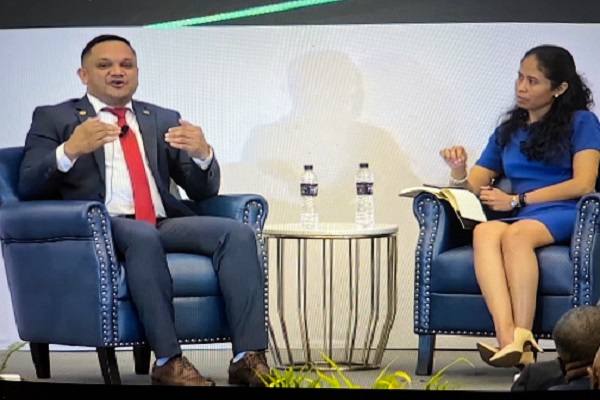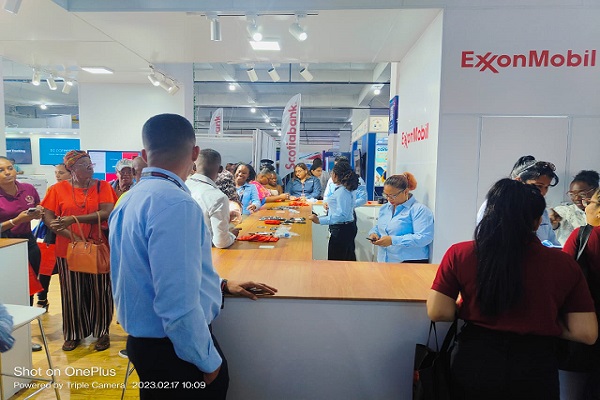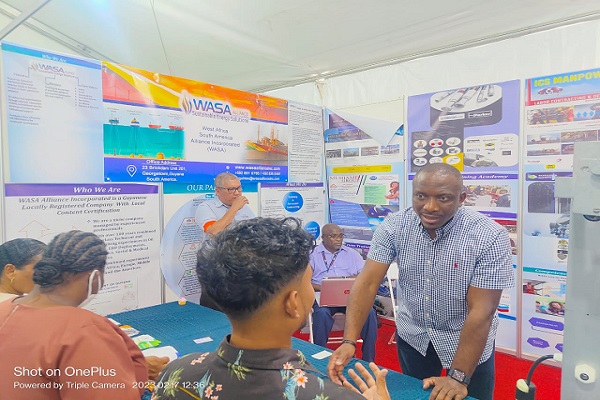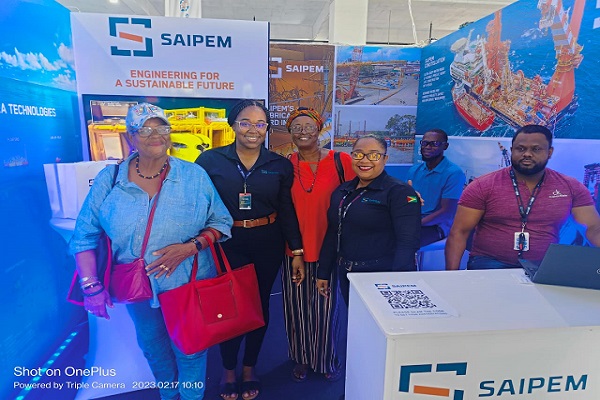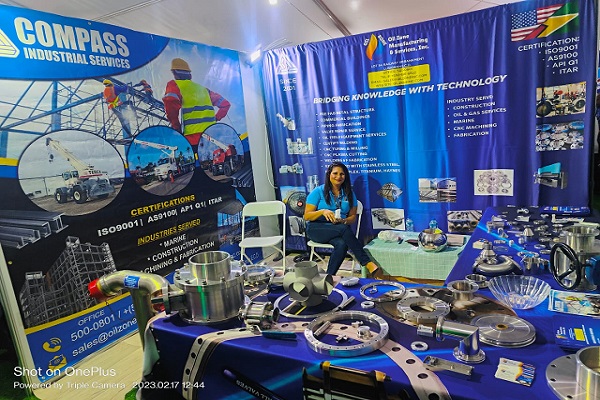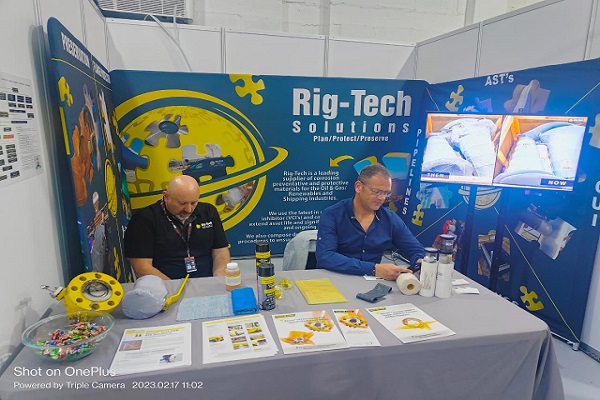On the second day of the conference Minister Bharrat admitted that Guyana has never benefited from value added processes that would generate employment as the traditional practice was to export its primary products for foreign exchange. This practice restricted entrepreneurship and the ability of the private sector to seek out and explore new opportunities.
Key to changing this backward situation he said is to improve the power generation capacity of the country with the development of the gas to energy project. The minister lamented that the reliability and cost of power generation has long been an impediment to economic growth and the government is committed to change that. The plan is to cut the cost of electricity by fifty percent and also to cut the country’s emissions from power generation significantly by moving from HFO diesel to gas.
Minister Bharat shared his frustration that the government’s critics continually insist they stop the gas to energy initiative when the science shows it’s safe to do so given Guyana’s Carbon Neutral status, the project will in fact cut emissions even further.
In terms of opportunities for both locals and foreign investors, the minister said this is tremendous particularly in the area of manufacturing that will generate new jobs. He jokingly said he remarked to a friend that a country like Guyana with such a vibrant timber industry actually imports toothpicks.
Minister Bharrat took the opportunity to clarify that the government made a few commitments to the electorate in August 2020 when it took office to ensure transparency in the oil and gas sector. The first was transparency and accountability. Guyana is one of the few countries to have signed on to the Extractive Industry Transparency Index (EITI) and as part of that commitment changed the Natural Resources Fund Act to ensure every Guyanese knows how much money flows in and is extracted from the fund through a transparent process facilitated by the Guyana Gazette online. This facility will also tell citizens how much of that money will flow into the national budget in the current year.
The second commitment the government made to the electorate was to ensure ‘every’ Guyanese benefits from the new revenue streams whether from the sale of carbon credits or the proceeds from oil and gas. Minister Bharrat explained that the government’s action plan to deliver on this promise is through the provision of modern and accessible educational facilities, improved health care, infrastructure and a vastly improved tourism product; these initiatives will help Guyanese to live and work comfortably thereby being more productive. The minister assured the audience that President Ali’s vision is for free education at tertiary level to be available to all Guyanese to help upskill this relatively small labour market.
Continuing on the commitments, Minister Bharrat spoke of the government’s partnership with ExxonMobil to build-out the Guyana Technical Training College in Port Morant Berbice that has a diverse offering not specific to the oil and gas sector but also caters to the tourism industry. He was pleased to announce that the oil and gas sector now employs upwards of four thousand Guyanese and the non-oil sector and ancillary industries employ thousands more.
In closing Minister Bharrat mentioned the importance of having a robust regulatory legal framework to support the transparency and accountability values promised. The government is in the process of producing a new Production Sharing Agreement (PSA) as well as a new Petroleum Exploration Act to replace the old Act of 1986 and also intends to amend the current Local Content Law to make it more relevant to evolving activities on the ground.
Following Minister Bharrat’s presentation was that of Liu Xiaoxiang, President CNOOC Petroleum Guyana Limited who provided a synopsis of the progress the company has made with its twenty-five percent stake in the Stabroek Block exploration project. Liu Xiaoxiang spoke proudly of his company’s donation of a complete solar lighting system to the community of Moraikobai which is a remote village in Mahaica-Berbice district of Region Five. This donation he said was made possible from support of one of the world’s leading power companies, PowerChina.
In quick succession was President, ExxonMobil Guyana, Alistair Routledge who began his presentation by stressing the importance his company places on the environmental security of Guyana while the company executes its strategy to develop Stabroek Block to the point of four hundred thousand barrels a day production by 2024 up from the present three hundred and ninety thousand barrels per day.
President Routledge assured the gathering that while they are optimistic of the ability to produce much higher levels ExxonMobil is taking cautious steps through constant engineering assessments and liaising with the EPA and Ministry of Natural Resources to satisfy all stakeholders that the operation is progressing in a safe, measured and sustainable fashion.
All of this with the recognition of the critical role Guyana is playing in the provision of much needed low emission oil and gas to the global economy as a direct consequence of the imminent global energy crisis. Their strategy to rollout one point two million barrels a day by 2027 is based on securing licence approval for approximately one project per year to facilitate the respective Final Investment Decisions (FID) and includes Liza Unity, Liza Destiny, Payara, Yellowtail, Uaru and Whiptail projects.
Most proud was President Routledge as he announced the planned arrival of the third FPSO, the Prosperity due to dock in Guyana in April 2023. He expressed his appreciation to the Guyana government for their professionalism and for the opportunity to assist them in their transformational plans for the country.
Thursday 16th February 2023 – Energy Security and Sustainable Development
The third day of the conference was kicked off by The Honourable Brigadier (Ret’d) Mark Anthony Phillips, Prime Minister of the Co-operative Republic of Guyana who began by acknowledging the value of the International Energy Conference in terms of its unique ability to harness and disseminate useful information to stakeholders interested in the oil and gas industry and he urged the day’s participants to engage with the many presentations and networking opportunities to follow.
The prime minister reflected on Guyana’s performance at registering a sixty-two-point three percent GBP national growth and an eleven-point five percent non-oil growth in 2022, results that put the country on the world stage.
He said the government is working to meet the country’s energy demand in the short-term following the startling revelation that between 2020 and 2022 the country’s peak demand increased to thirty percent while energy demand increased to more than twenty-four percent. To address this the prime minister said countries such as Guyana with a high priority on reducing emissions need to balance that demand through the use of efficient flexible and reliable energy sources.
Such energy sources he says are contained within an energy matrix of hydropower, solar, natural gas and wind leading to more than five hundred megawatt (500MW) of newly installed capacity by 2025. Prime Minister Phillips announced that the much talked about gas to energy project will deliver electricity to households in the year 2024. This multibillion-dollar investment he said would reduce the cost of power by fifty percent bringing much needed relief to all Guyanese.
Additionally, the prime minister highlighted the planned refurbishments to the Guyana Power & Light facility which is expected to receive a modern Control Centre with two hundred and thirty kilovolt (230kV) and sixty-nine kilovolt (69kV) stations along with transmission and distribution lines. Plans are also in place to relaunch the RFP for the one hundred and sixty-five megawatt (165MW) Amelia Falls hydro power project.
In closing the prime minister impressed upon the gathering the fact that the planet has looked after us for tens of thousands of years and it behoves us to be responsible with it as our only home. He recited the definition of sustainability to drive home the point about being responsible and left the audience with the following Native American quote, ‘We do not inherit the land from our ancestors, we only borrow it from our children.’
The second presenter was The Honourable Dr. Ashni K. Singh, Minister of Finance who recounted the central mantra of the government’s commitment to place the highest level of importance on ensuring there is strong, sustainable and real economic growth in Guyana. He provided context to the Guyana achievements by citing the global economic recession and supply chain challenges, COVID-19, Russia / Ukraine war and Guyana’s own traumatic political period from 2018 to 2020 during the process of the no confidence motion, to showcase how encouraging things are now for the country as a whole due to the world beating growth and expansion figures achieved.
Dr Singh successfully set the minds of participants and more particularly investors, at ease when he pronounced the economic forecast for the medium term (next three to four years) to 2027 is expected to see sustained economic growth in excess of twenty-five percent. A feat he suggests is rare in historic economic contexts but attractive to investors looking for a jurisdiction with a strong track record of economic growth.


